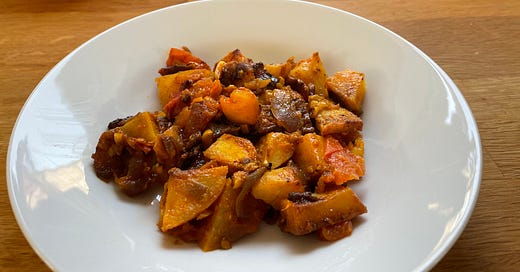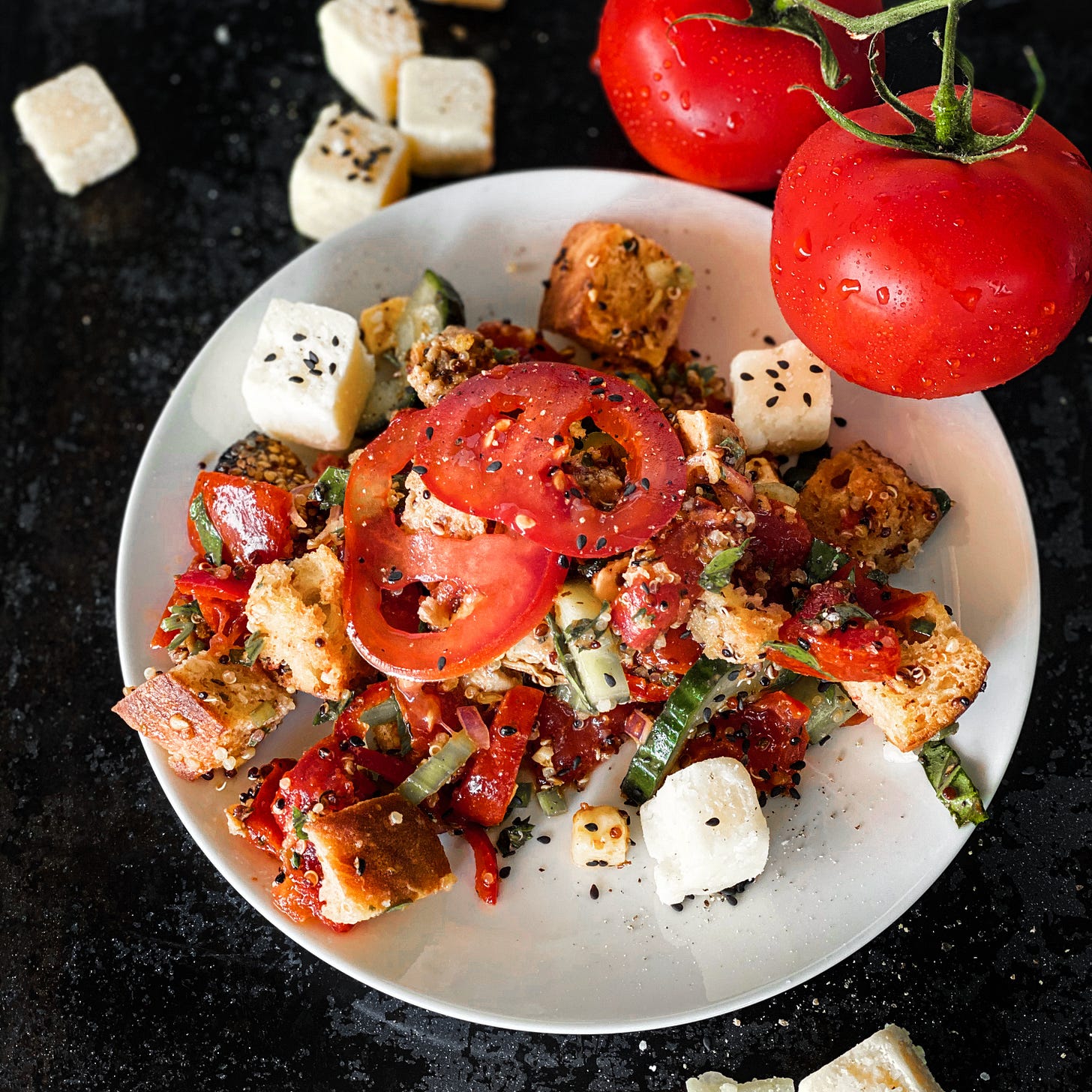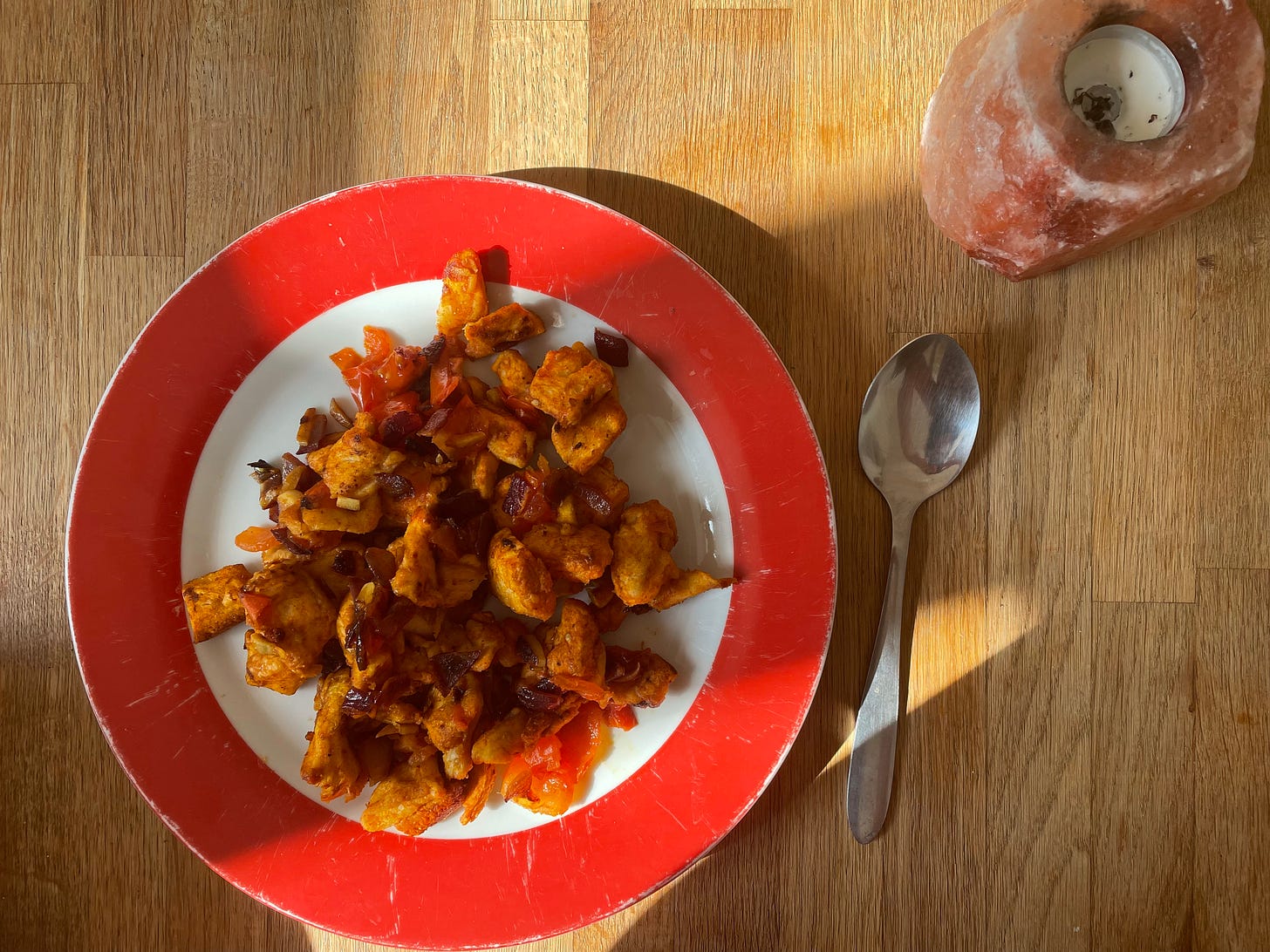A tale of three peninsulas and their thrifty, delicious recipes: From Sindh to South Korea and Italy
I reflect on the three Sindhi staples I must have in my kitchen at all times and how these ingredients somehow connect to two of my favourite Korean and Italian dishes.
I became familiar with the concept of Desert Island Discs after moving to the UK four years ago and to this day it baffles me that the remit of Desert Island Discs only covers eight tracks, a book and a luxury. I adore Harry Styles but I doubt that his vinyl would make for a scrumptious meal. Wouldn’t it make more sense for Desert Island Discs to focus on what ingredients people would like to have on them when they’re in a Tom-Hanks-makes-friends-with-a-football kind of situation because that’s way more practical. Just like someone’s coffee order reflects their personality, the same would be true of their top three ingredients to make something delicious out of a very limited pantry. I suppose it is that restriction or lack of resources that has given birth to some truly delicious recipes worldwide. Coming from a Sindhi household, I reflected on the three cardinal ingredients of Sindhi cuisine that come together to create recipes to use up leftovers or to flavour food with minimal ingredients. And in that process, I stumbled upon some discoveries that ended up connecting my desert island pantry across three peninsulas – Sindh, Korea and Italy.
Be it my mum’s kitchen or my own, we always have the following three ingredients on us: onion, garlic and tomatoes. These three powerhouses of flavour are commonly used in Sindhi cuisine using a technique called seyal. Seyal calls for using onion, garlic and tomatoes to create an aromatic base for cooking meat, vegetables, chapati (Indian flatbread) or bread. Essentially, seyal directly translates to cooking something in its own water. Onion and garlic are finely chopped and added to a pan with some ghee or oil without tossing and turning either of them. The goal is to let the onion and garlic soften and cook in layers so that their aromatic flavours are infused into the ghee or oil. As the onions become translucent and the garlic bright yellow, you add your choice of vegetable or meat and once it’s cooked halfway, add a handful of roughly chopped tomatoes to the pan like a bright stroke of red paint on a canvas. Salt, turmeric and coriander powder are added at this stage for packing in more colour and flavour as the tomatoes release water that allows the veggie or meat to be fully cooked to perfection. The result is a dish where the softness or your main veggie or meat is sweetened by onions, made plump and tangy by the chopped tomatoes and brought together by the maestro of the meal, the garlic. Ginger and chilli are also added to the base; however, onion, garlic and tomatoes are essential.
Growing up, paneer (Indian cottage cheese) and potatoes cooked à la seyal was very common in our house and my grandmum’s house and it was only when I started living in university residence halls that I began to appreciate the inherent thriftiness of seyal paneer or patata (potato). When all I had left in my fridge was a hunk of tofu, tomatoes, onion and garlic, seyal tofu was the perfect punch of protein to be enjoyed with a side of rice. In pre-partition Sindh, according to my grandmum, seyal was adopted as a method of cooking any seasonal vegetable in a flavoursome way without using any water whatsoever and by using up what staples were available at home. One prime example of this is lotus root or bhee as it is called in Sindhi. The seyal method beautifully breaks down the fibres of the lotus root making it less hairy (if you’ve ever eaten lotus root, you know what I’m talking about) and so chock full of flavour that it melts in your mouth as if it were flavoured butter. These days, seyal bhee is reserved for family get-togethers as lotus root is not an easy find even if you live in a big, metropolitan city in post-partition India.
The fact that seyal means to cook something in its own water was only made known to me right after I picked it as the topic of this article. As my grandmother explained its etymology over the phone, my mind immediately went to another favourite dish of mine which while isn’t Sindhi, it certainly is also about cooking something in minimal amounts of water. My close friend Rebecca Ghim (and the founder of London’s first zero-waste Kimchi brand, The Ferm) taught me how to make dubu jorim or Korean braised tofu one summer evening. As I sliced the onions, Rebecca prepared the sauce mix for dubu jorim with gochujang, soy sauce, sesame oil, gochugaru, sesame seeds, minced garlic and most importantly, water. She then layered cut pieces of tofu on top of the sliced onions and added the sauce mix to the pan and let it simmer on low.
Rebecca told me that jorim in Korean means to cook something in minimal amounts of water. What are the odds that seyal and jorim both have the common elements of layering and cooking something in water? And what are the odds that the idea behind both techniques is to cook a flavourful yet minimalistic dish when resources and budgets are tight? Creator of the Korean food blog Korean Bapsang, Hyosun, describes jorim as any dish that “involves short braising in a slightly sweet, soy sauce-based sauce. It’s a filling, inexpensive dish we all grew up on [in South Korea].” Where gochujang, soy sauce and sesame oil form the pillars of Korean cuisine, tomatoes, onions and garlic form the pillars of Sindhi cuisine. While jorim does call for minimal amounts of water to be added to any of its recipes, in modern times even seyal requires a little bit of extra water. I spoke to MasterChef India contestant and custodian of Sindhi cuisine, Deepa Chauhan about seyal and she hypothesised that in pre-partition times, food was cooked in earthenware pots making it possible to omit any extra water in seyal preparation. However, in today’s day and age of stainless steel and Le Creuset, a splash of water here and there does help.
If you thought that the similarities between seyal ended at Korean cuisine, then let’s travel a little further West to another peninsula with a robust food history: Italy. Another seyal recipe that has vague Italian connections is seyal bread or seyal pav (Indian dinner rolls). Aneela Mirchandani who runs The Odd Pantry blog rightly described seyal bread as a Sindhi panzanella where leftover bread is cooked in the onion-garlic-tomato base with some turmeric powder, chilli powder and salt added at the end. While panzanella is a cold Italian salad with leftover bread, tomatoes, onion and balsamic vinegar, seyal bread is fully cooked on the stove. But that’s where the differences between the two dishes end and some uncanny similarities begin.
Most of us associate tomatoes with panzanella, in fact, a lot of us associate tomatoes with Italian cuisine. If you whisper tomatoes close to your phone, I am so sure that your Pinterest will show you Pomodoro recipes to try out. But guess what? Tomatoes were only introduced to the Italian peninsula in the 19th century through Spain’s trade relations with Latin America. Since its conception in the 16th century, panzanella was originally all about using up leftover bread with some onion, vinegar and herbs added for flavour. We begin to see tomatoes pop up in the salad in the 19th century with tomatoes becoming the star of the show and an important ingredient on what we now associate Italian cuisine with.
Deepa also enlightened me that tomatoes too were introduced in Sindh in the 19th century due to Sindh’s trade relations with European and Latin American countries. Bread was introduced around the same time as well along with many other “New world” ingredients, allowing the two key elements of seyal bread to made available in Sindh. How beautifully coincidental is the fact that the same forces of international trade conspired to introduce the one ingredient that can make or break a delicious panzanella and seyal bread?
The appearance of tomatoes in the 19th century in Sindh also found its way into a version of Sindhi curry, created by a subsect within the Sindhi community (Shikarpuris) who added tomatoes to the chickpea flour base, well before partition ever occured (thanks to Deepa Chauhan’s testimony of her 93-year-old Sindhi neighbour in Bangalore, India). This tomato-base recipe has evidently stayed on post-partition, along with multiple other variations of Sindhi curry.
In the process of digging through the histories of seyal, dubu jorim and panzanella, it feels as though before globalisation sunk its claws into our capitalistic world, centuries of communities across continents have had to cook with desert island pantries. And as exciting as it feels to have access to ingredients from the other side of the world, it also feels wasteful and unnecessary. If all we need to make flavourful, delicious food are three to four simple ingredients and barely any water, then the adage “less is more” rings true in this day and age of saturated food supply chains. Furthermore, if we all reflect on the vegetables we find on our plates and where they truly come from, we will realise that the first wave of globalisation (sponsored by colonial trade) has allowed most countries in the world to produce the same set of staples like tomato, onion, garlic, potatoes and many other vegetables as their own native varieties now. Maybe once in a while, we all need to be limited to a desert island pantry of our choosing to create something new, imaginative and just simply delicious.







i subscribed today and enjoyed reading this article. It was enlightening to learn what seyal means. I would appreciate a clarification on seyal. Does it have 2 meanings? All this while I thought seyal meant cooking with the green coriander pesto aka kotmeer mashalo - in my home we called dishes made with this pesto "bindi patata seyal" or "seyal machee". Am I missing something here, does seyal refer to these dishes because of low/no water, or because of the pesto.......words and food, words and food :)
I always enjoy your texts! Today I am going to use all the tomatoes I have at home. 😊